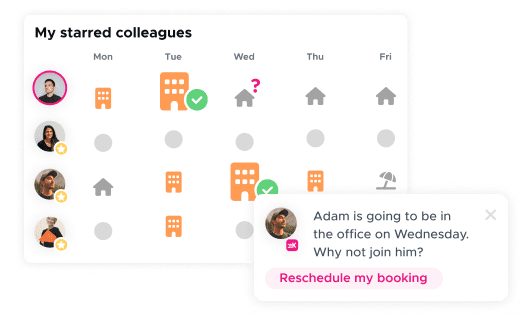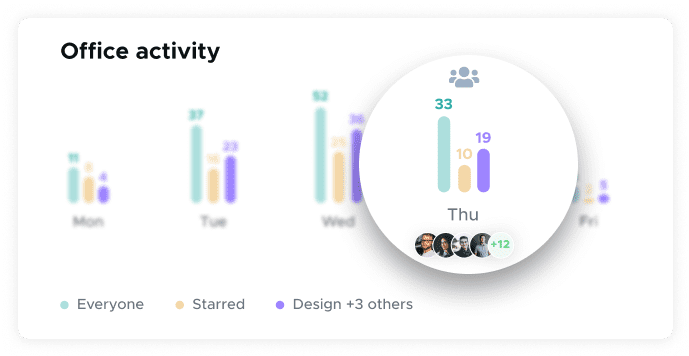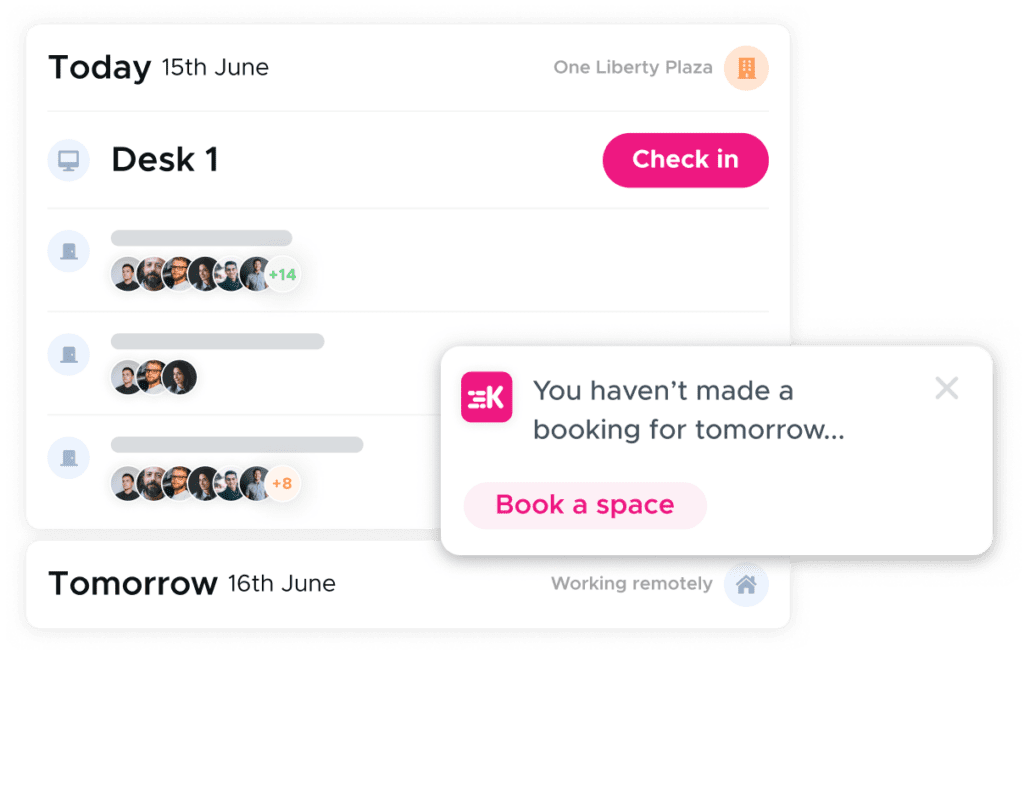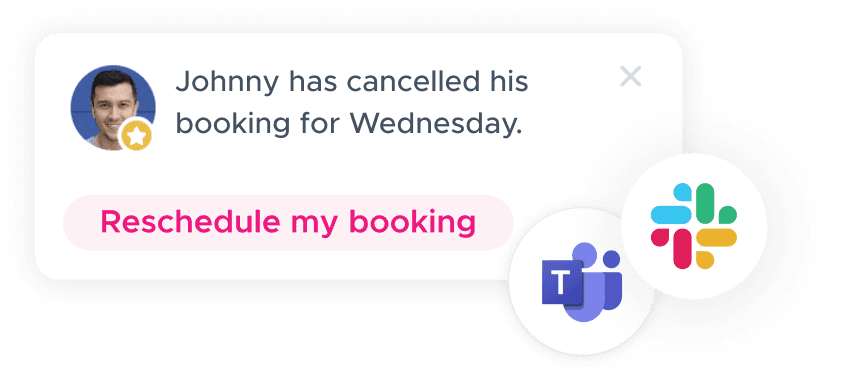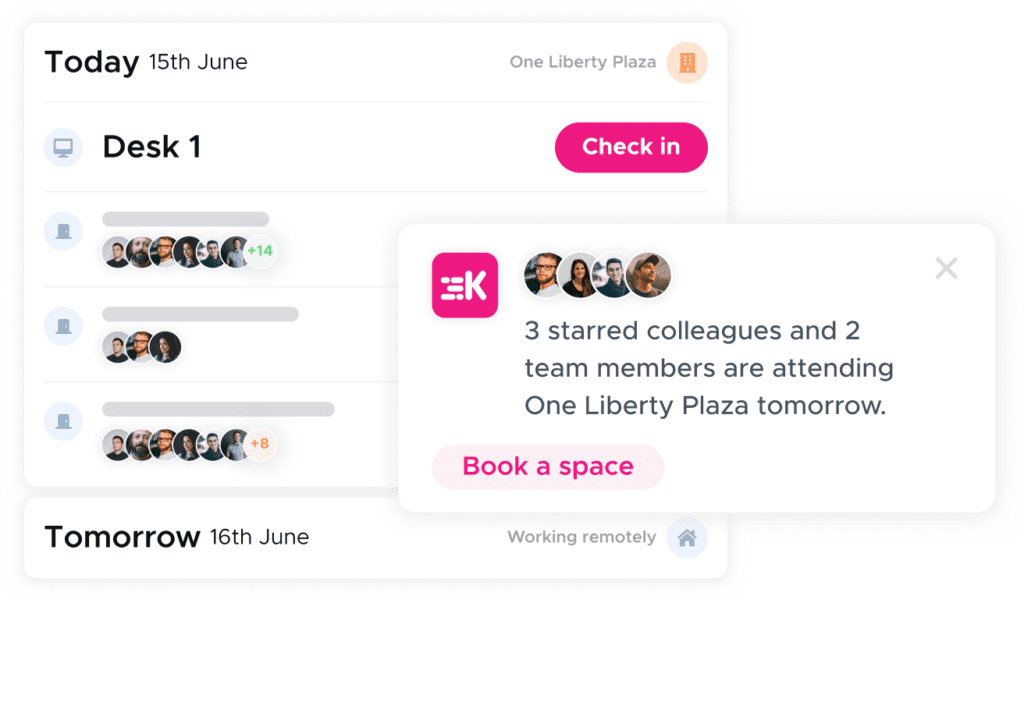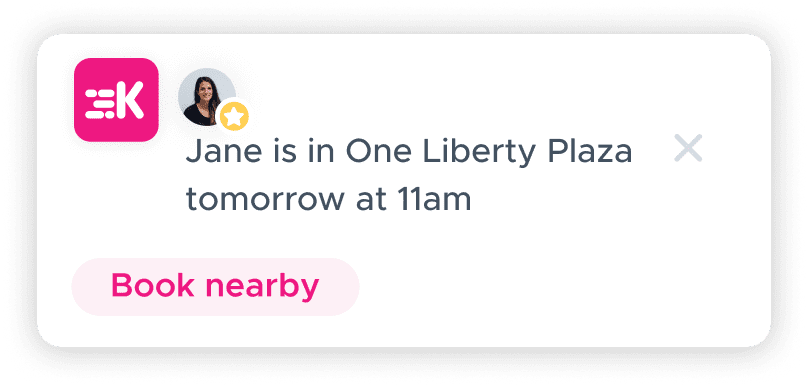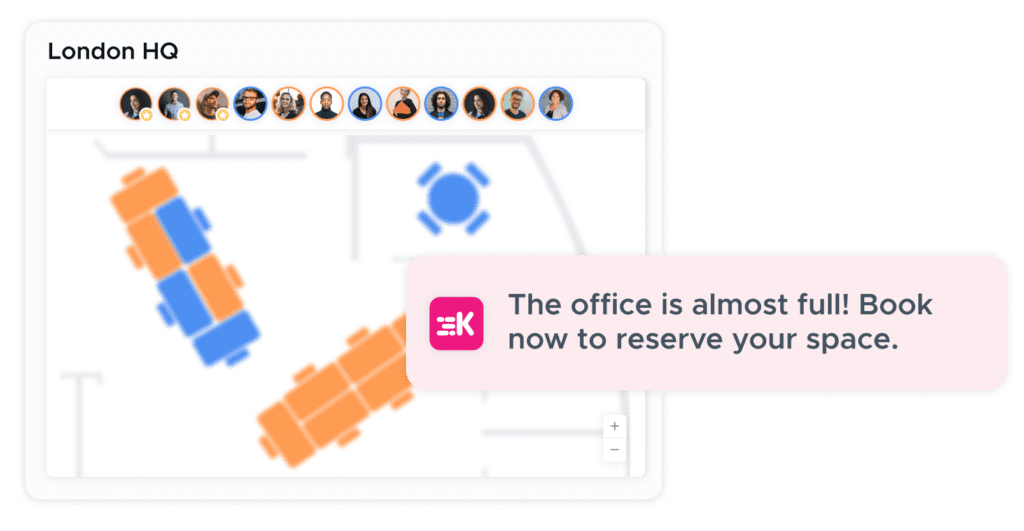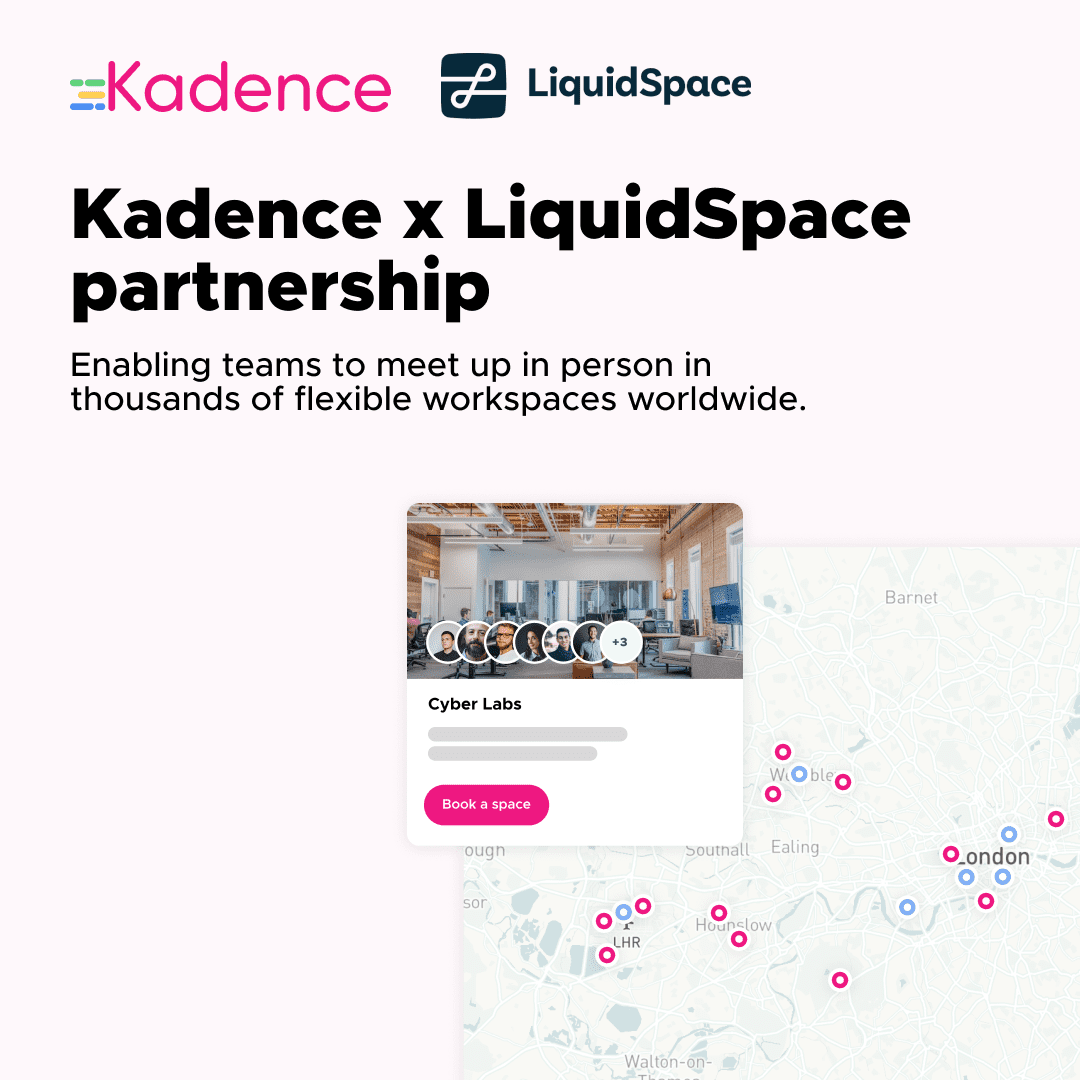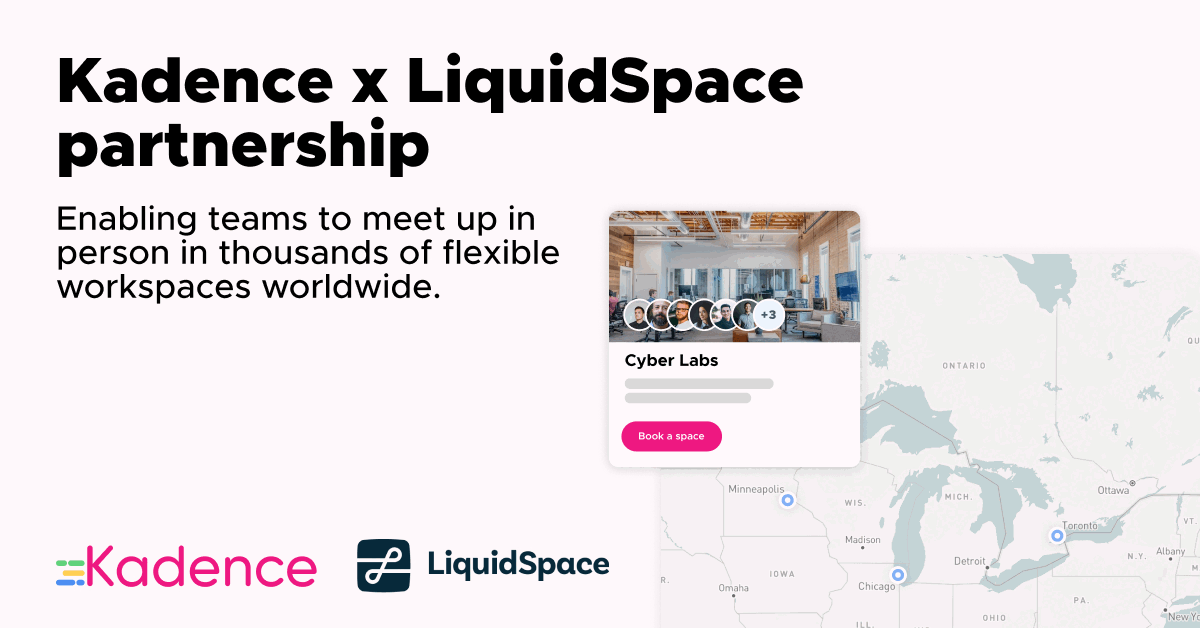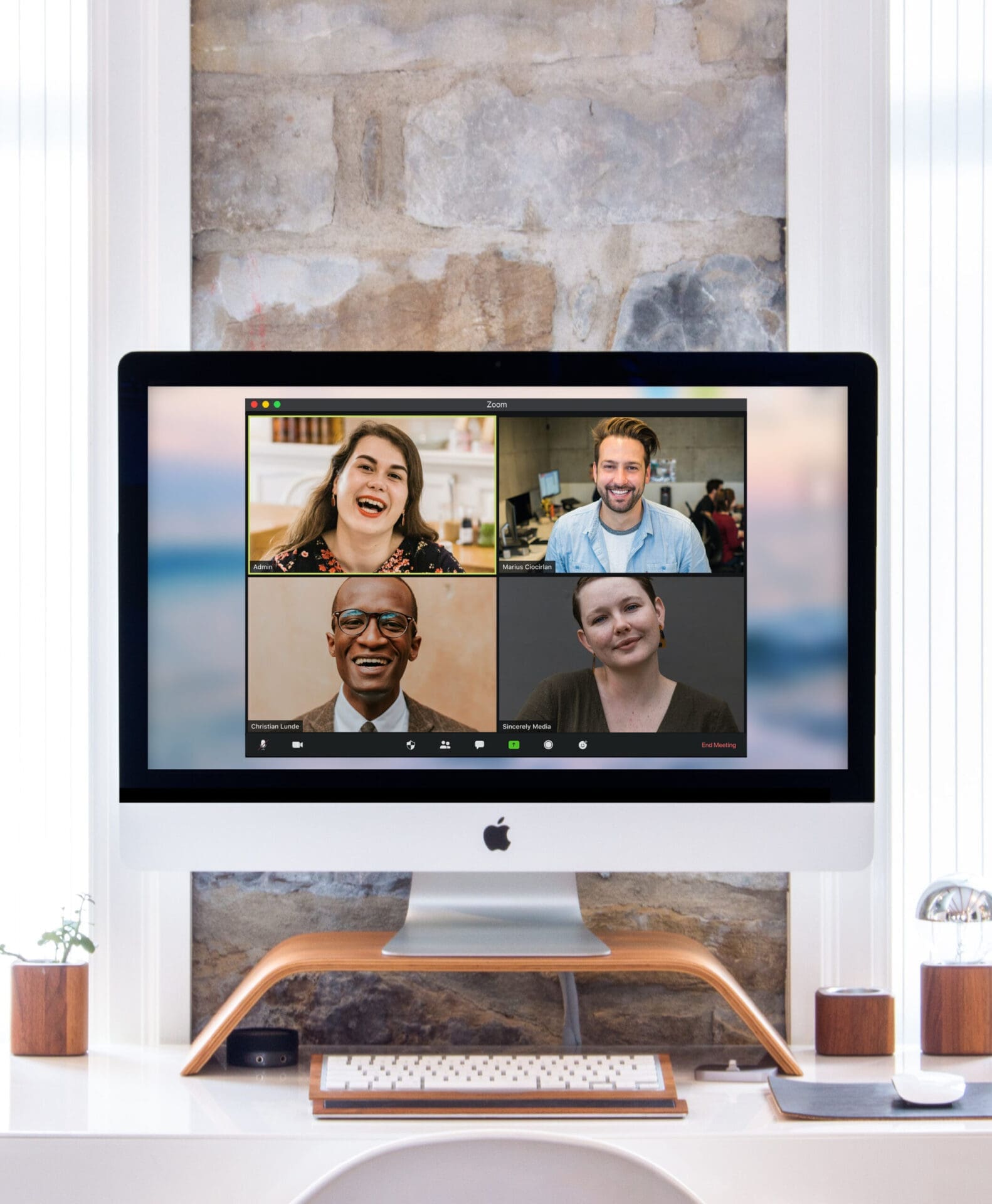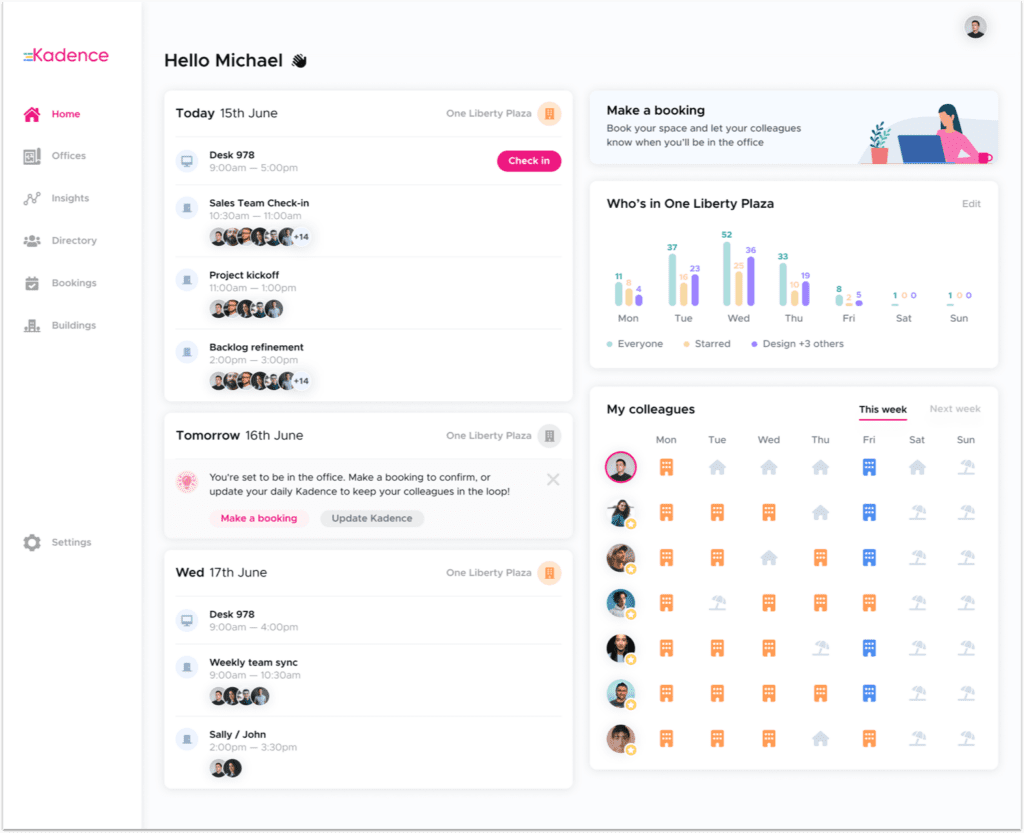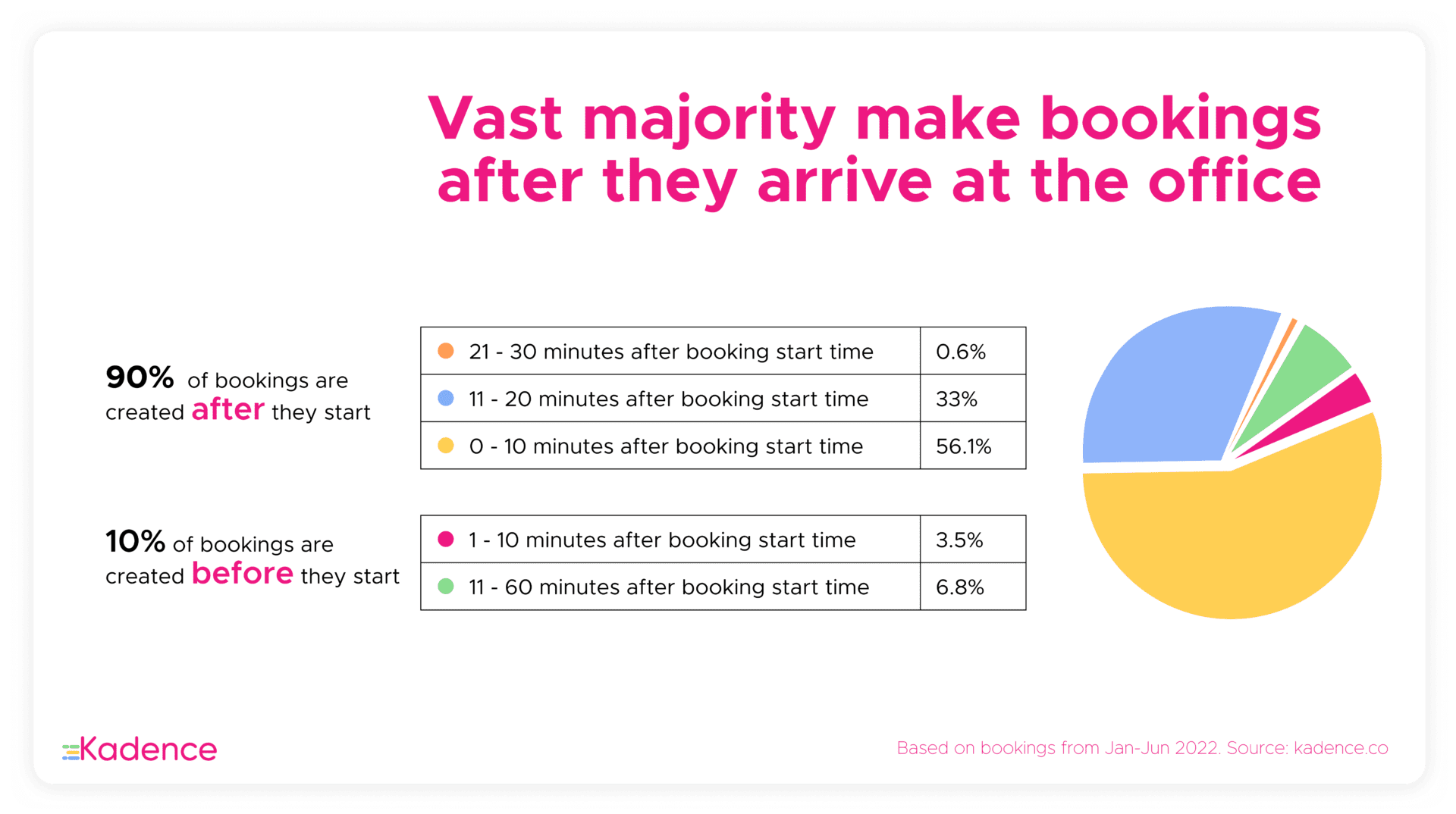In today’s world of work, managing Flexible Work Spaces can lead to a headache or two.
Whether a small startup or a multinational enterprise, you’re probably wrestling with the same questions: How do I provide space for a growing workforce? How do I coordinate a distributed team? Can I justify this long office lease?
Some companies have tackled these questions by going fully remote. But for those of us who value face-to-face collaboration, that’s not an option.
That’s why we’re excited to introduce Kadence Flex: a one-stop solution for flexible workspaces, all from within your hybrid operating platform.
Coordinate your teams with flexible work spaces
The flexibility offered by hybrid work is liberating, but it can also feel disorienting.
When colleagues are scattered around different cities and countries, in-person time can be hard to come by. Teamwork and productivity can suffer as a result.
Kadence Flex partners with LiquidSpace to offer you thousands of co-working spaces all around the globe. Your teams now have the option to book co-working spaces near them and coordinate in-office days with colleagues ahead of time.
With flexible desk booking included within Kadence Flex, your teammates can simply choose which flexible workspaces work for them, and book a physical spot right away. You’ll even be notified when relevant colleagues have booked a flex workspace. No need to miss out on quality in-person work.
Kadence Flex even helps you schedule recurring team days in co-working office spaces that are accessible to everyone. Say goodbye to those awkward Thursday Marketing meetings on Zoom — it turns out your team has booked a room at a flexible office instead.
Bringing your employees into the office used to be a challenge. Now, with easy access to countless flexible workspaces — it’s a given.
Easily manage your distributed workforce with flex workspaces
A distributed workforce is a beautiful thing, but it comes with its challenges. Spontaneous co-working between colleagues can be handy, but it’s hardly a solution for the long term.
Kadence Flex helps your teams get together more often than ever, in thousands of co-working office spaces worldwide.
With an overview of company offices and flexible offices near you, you can see exactly when and where your team is choosing to work. This enables your employees to get their best work done with the right people, in the right places.
Are colleagues constantly on the move? There’s no need to sacrifice collaboration. No matter where your team works, they will still have easy access to thousands of flexible coworking spaces.
From new hires onboarding together in Lisbon to operational all-hands in London, let your team connect and collaborate with more frequency than ever.
Kadence Flex gives you all the information you need to make desk and room bookings in flexible offices that make sense for you and your team.
Cut down real estate costs with flexible offices
In tough financial conditions, controlling real estate costs is crucial for businesses of all shapes and sizes.
Kadence Flex gives you access to comprehensive booking data and attendance metrics across both company offices and on-demand flexible workspaces. It’s a centralized platform that offers full visibility into how you use your own office or on-demand coworking office, allowing for data-driven decisions.
Whether it’s identifying underused locations or scaling up in areas of high demand, Kadence Flex offers you the insights you need to tailor your office space to your actual business needs.
Kadence Flex also aligns seamlessly with your hybrid policy. By analyzing usage patterns of offices and flexible workspaces, you can adapt your strategy to ensure that your workforce is productive and engaged.
This level of adaptability not only cuts down on unnecessary real estate expenses but also contributes to a more dynamic and responsive work environment.
Instant access to flexible office spaces will help you stay lean in the long run.
A new era of workspace flexibility
The flexibility and adaptability required to manage a modern workforce can be overwhelming. We hope we’ve persuaded you that Kadence Flex is a worthy partner in your journey to fully flexible work.
It’s not just about offering flex workspaces or enabling hybrid work. It’s about redefining how we think about and make use of our work environments.
With Kadence Flex, you can choose flexible workspaces that suit your needs. Whether it’s coordinating team meetings in convenient locations, booking a desk in a city you’re visiting for a week, or simply finding a quiet flexible office space for focused work, Kadence Flex makes it all possible.
Then there’s that office lease. Kadence Flex helps you make smarter decisions about office space investments, ensuring that every square foot is used to its maximum potential. Why pay for space you’re not using? Simply integrate flexible workspaces into your workflow and see your real estate costs plummet.
Kadence Flex is more than a tool—it’s a new approach to how we work.
If you’re interested to see it in action or understand more about Kadence, we’d love to hear from you.
Go flexible!






